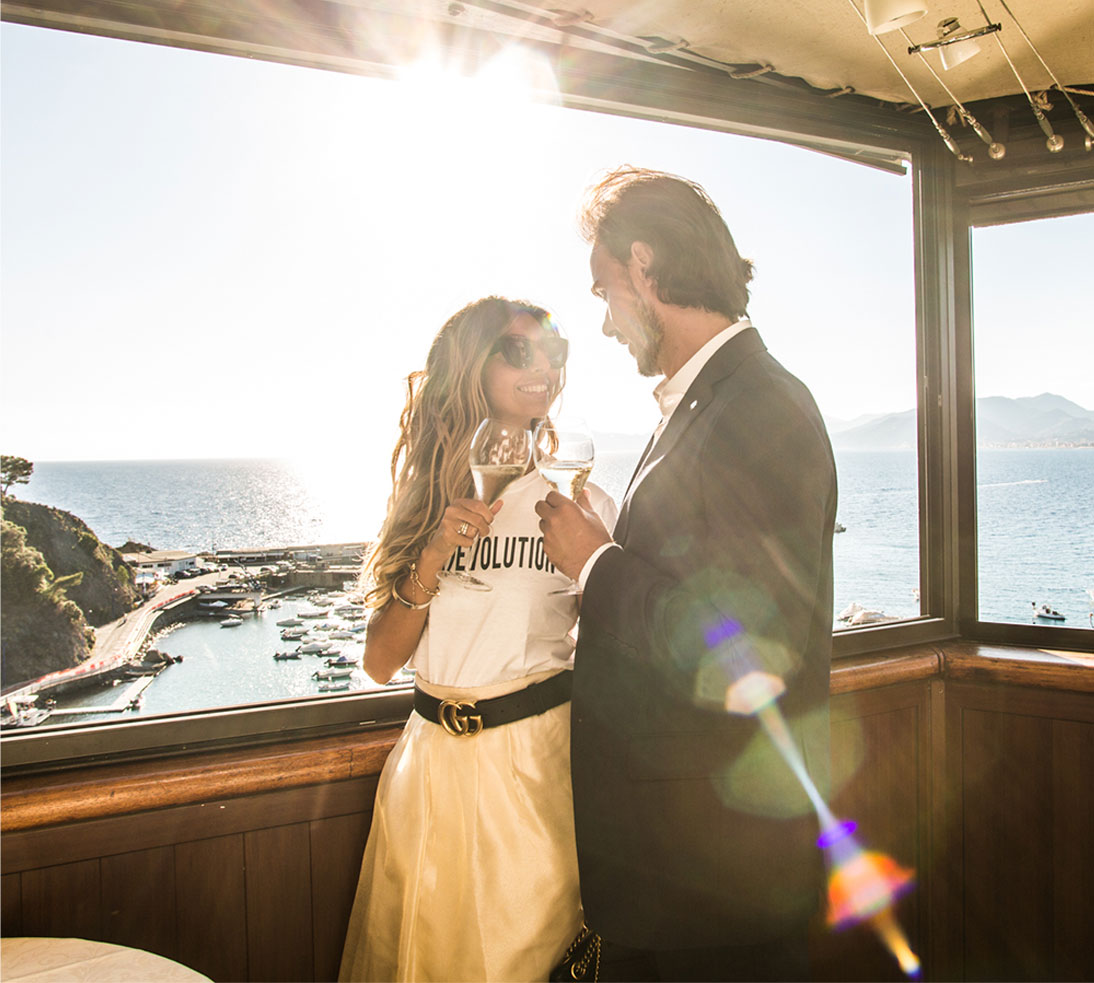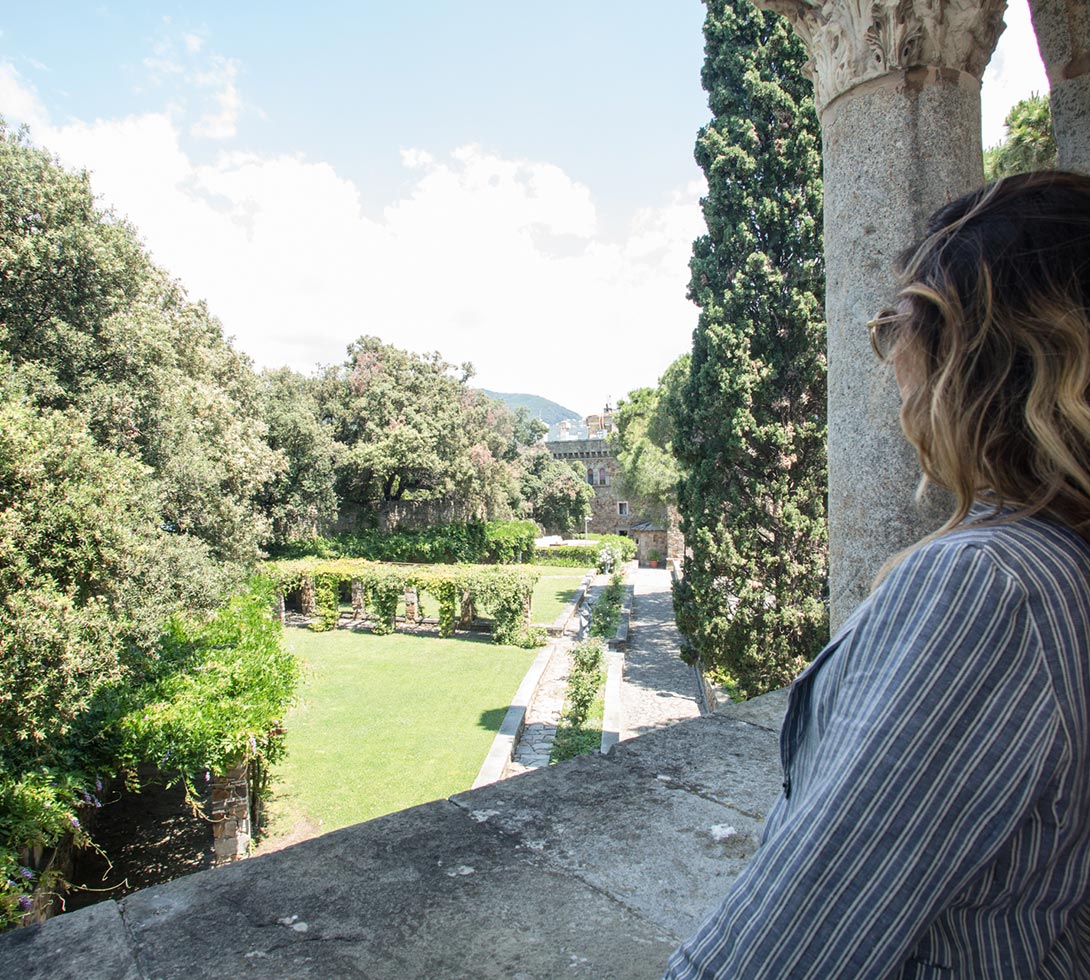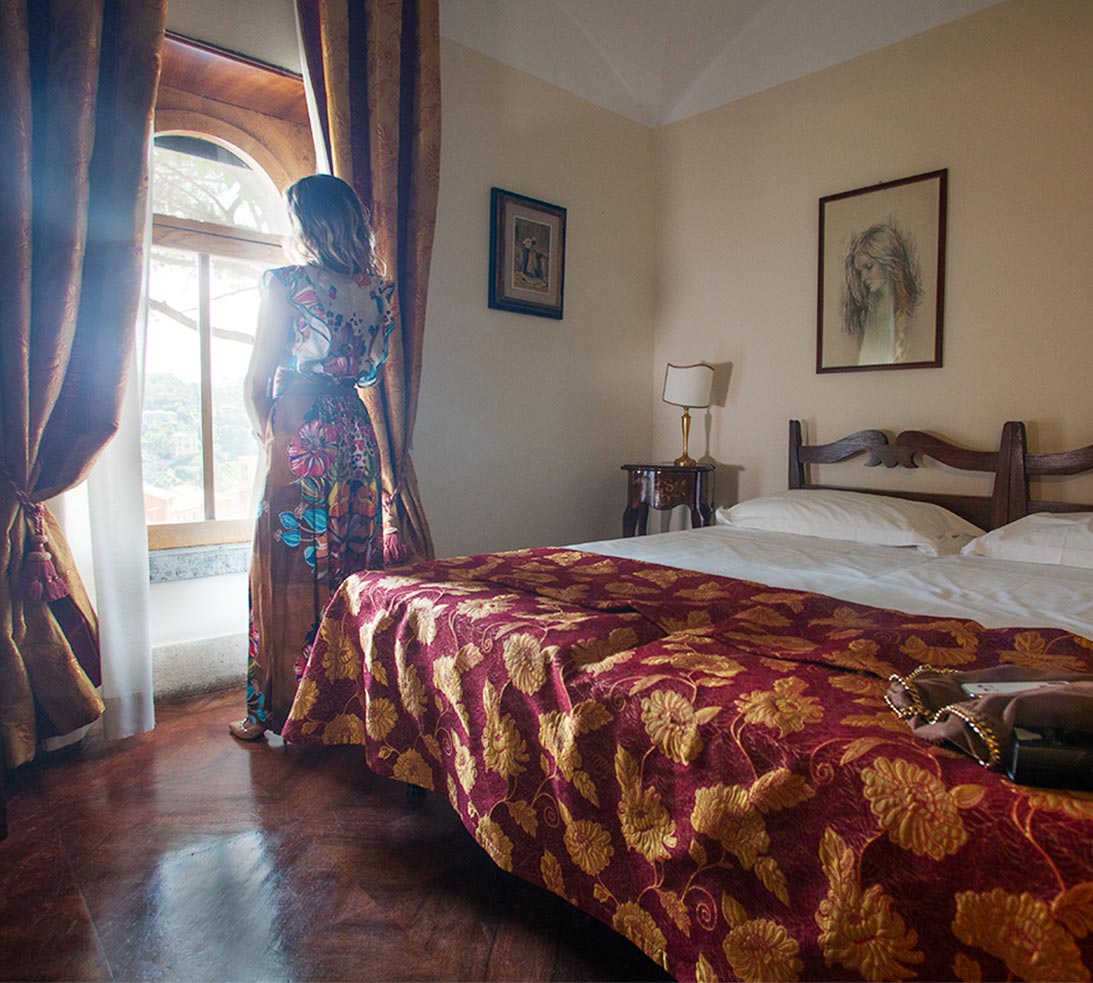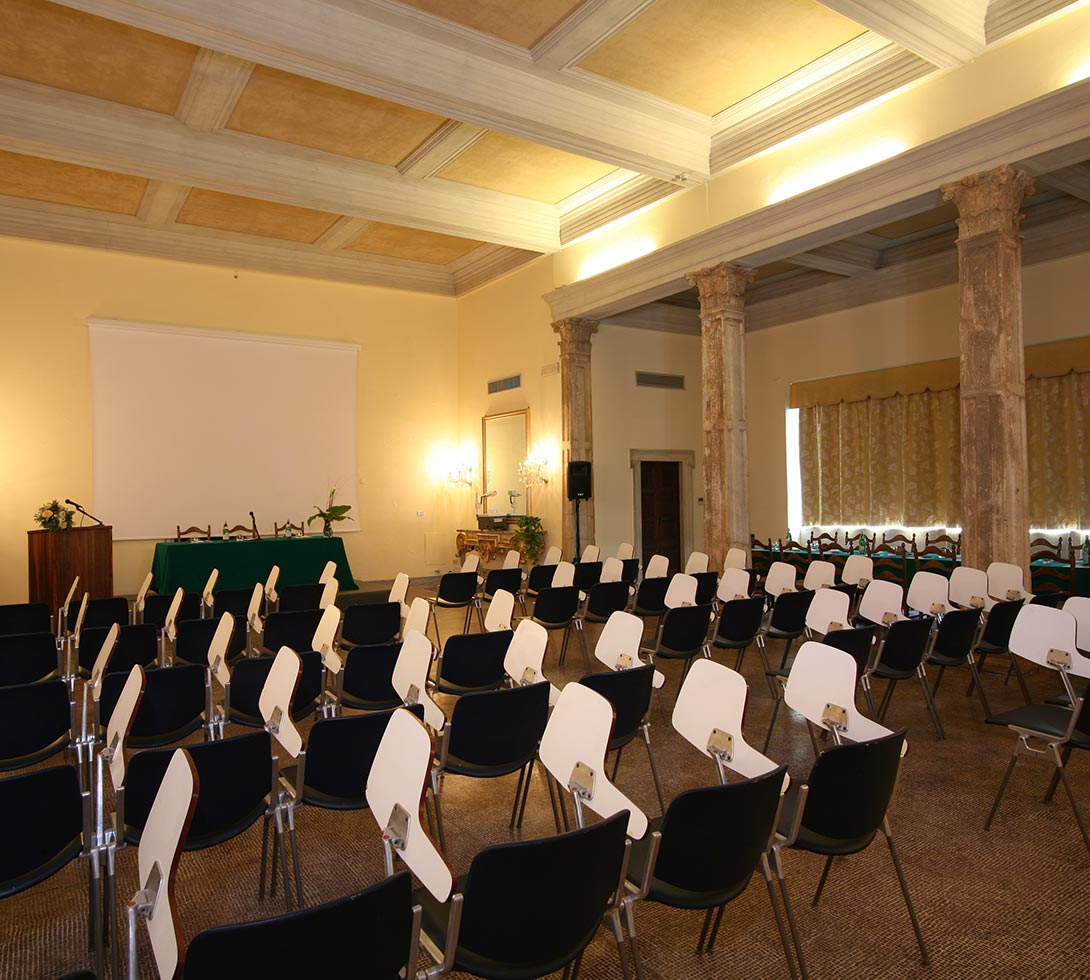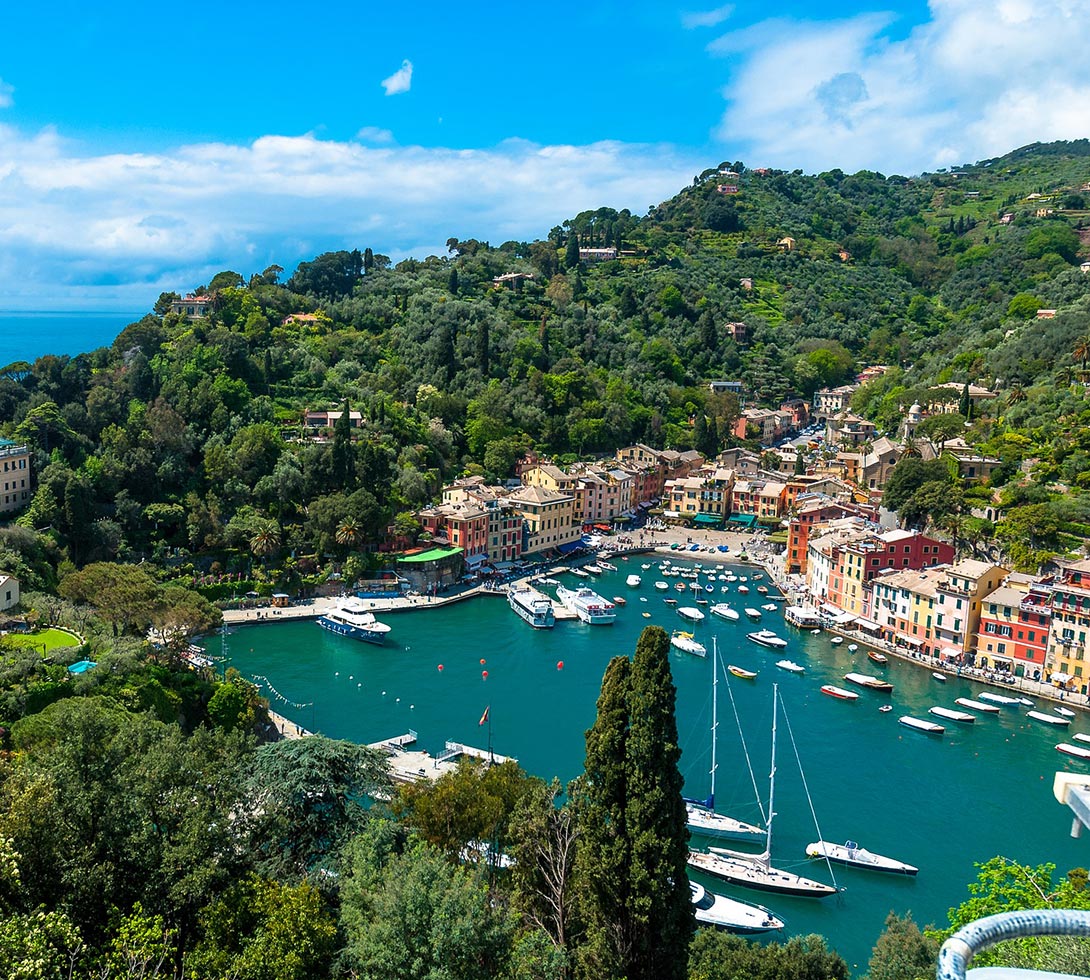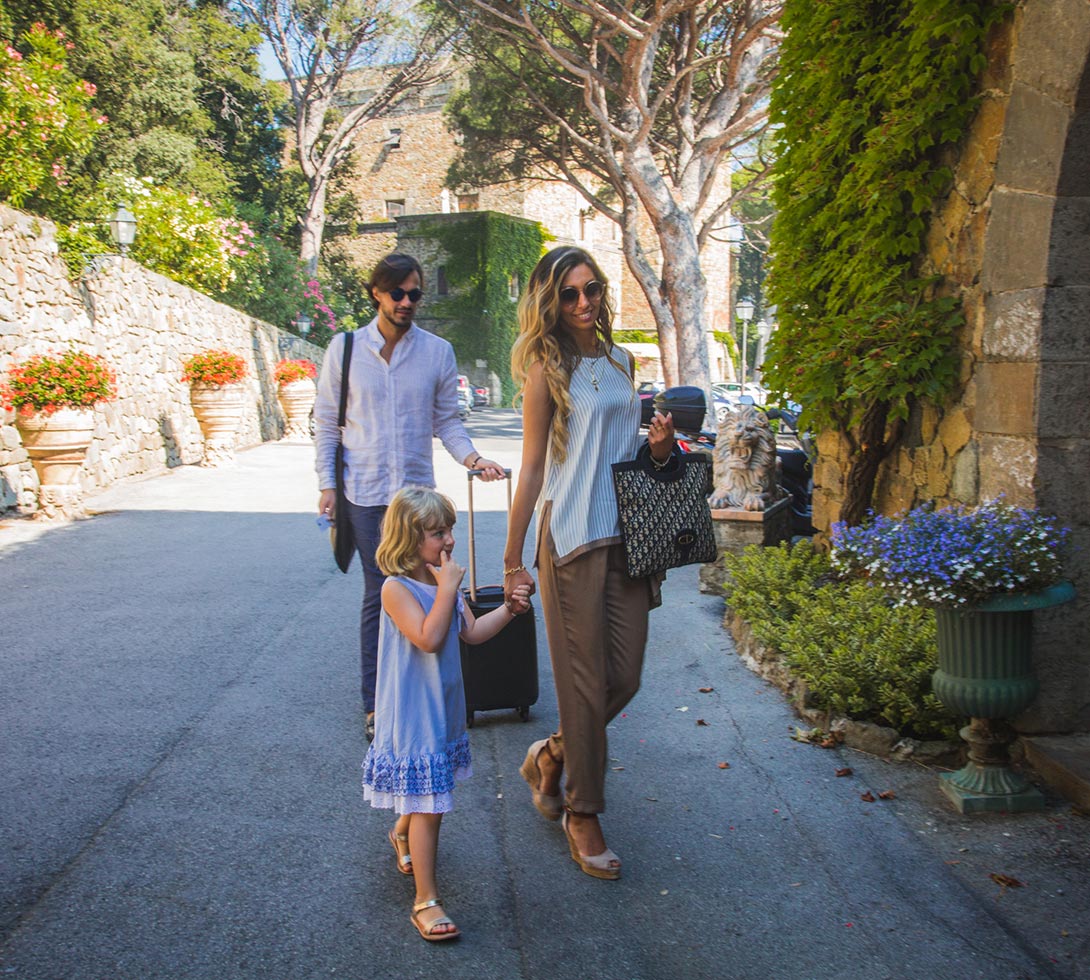Grand Hotel dei Castelli - Sestri Levante (GE) - Riviera Liguria, Italia, tra Portofino e le Cinque Terre

Boka online
 Bästa pris garanterat
Bästa pris garanterat Direkt kontakt med hotellet
Direkt kontakt med hotellet Inga extra kostnader
Inga extra kostnader Specialerbjudanden reserverade för dig
Specialerbjudanden reserverade för dig Direkt bekräftelse
Direkt bekräftelse
Cinque Terre
Monterosso
Byn Monterosso kännetecknas av den medeltida stadskärnan och utvecklingen av ett modernt bostadsområde, som sträcker sig längs stranden vid kusten. Stranden vid Monterosso är den största vid Cinque Terre kusten och växlar från sandiga sträckor till isolerade klippor. Har den största hotellkapaciteten längs La Spezia kusten.
The name probably derives from the red hair of the family then dominant.
In the past, Monterosso possessed an important tuna-fishing nets, which led the village to be renowned for its fishing, especially for salted anchovies and scabeccio, fried fish, preserved under vinegar in barrels of wood
The original nucleus was situated on the hill of San Cristoforo, that today separates in two areas the village, and spread along the banks of the river Branco, now covered. Monterosso Vecchio (Old Monterosso) has remained virtually intact and has the same characteristics of other villages of the Cinque Terre, with the typical tower - houses crossed from close carruggi. Being prey to continue struggles on the sea, there were implemented various defensive works
Of this impressive system remain the Castle, overlooking the sea, which incorporates three round towers, some sections of walls, the medieval Tower, today bell of the Church of San Giovanni, and the Tower Aurora, residual of thirteen towers that in the sixteenth century surrounded the village.
Paths
1) The Sanctuary of Nostra Signora di Soviore is the oldest Mary sanctuaries of Liguria. It is a collection of several buildings, consisting of the church, the bell tower and the guesthouse. Along the path leading to the sanctuary meets on a small votive chapel, Baroque construction addressed to the West. At Soviore, the tower looks like a compact tower, developed on three floors equipped with loopholes for defensive function. Next to the tower, the church shows a Gothic portal and a central lunette, with a marble bas-relief depicting Our Lady of Sorrows. Some architectural elements confirm the existence of a primitive chapel, modified over the centuries, to become the current Church. The yard of the Sanctuary overlooking the village of Monterosso. From here you can enjoy a beautiful landscape and the path that leads to Soviore, once route of pilgrimage, exciting and relaxing walk in the green
2) The literary Park Eugenio Montale tries to revive to visitor the intense emotions of the verses of the writer. Expert guides accompany visitors among the terraces overlooking the sea, in a Montale itinerary accurately reported by cartels and precise indications. The path can starts from Fegina, where the are the statues of Giant and Villa Montale, the house, where the poet, still a child, spent his Summer holidays, until reach the historic centre of the village, where you can visit the church and cemetery with the family tomb, which he often mentions in his verses. But the "Montale places" to discover are infinite: search for traces left by the poet, or guess the points that have inspired him, or simply surrender to reading and listening his poems, immersed in nature and landscapes that he praised
Vernazza
Vernazza är byn av 5 Terre som mer än andra har bevarat aspekten av en havsby med dess bekväma och säkra naturhamn. Dess hus är omgivna av ett tätt nätverk av smala gränder och arrangerade i olika gradienter erbjuder skrymslen och vrår som är alltid nya.
Its name derives from "Gens Vulnetia", an ancient Roman family, which owned slaves who, once freed, founded the village. Over the centuries, Vernazza has enjoyed b economic and political importance, as evidenced by the style of its houses and its streets, adorned with rich loggias and arcades. Even today, it is indeed a noble and elegant village, perched at a steep cliff. The village develops along the river Vernazzola, now covered, to rise back on the slopes of a rocky outcrop that hides the village to those coming from the sea.
Steep and close lanes go down towards the main road that leads to a small square in front of the harbour. Its houses, the same type of tower-houses of Riomaggiore, Manarola and Monterosso, are covered by a dense network of narrow carruggi and placed on different slopes that offer corners always new, like Palazzo Porticato, accessible by a narrow passage, situated close to the sea. Other architectural elements that characterize the village, go back to the complex defensive system that Genoa people organized to protect Vernazza from Saracens, from barbarian invasions and all their enemies.
Through the natural inlet of the Gulf, was built a port for galleys, which, unique in Cinque Terre, was useful during the fight with Pisa people. The numerous fortifications, already erected before XI century, were repeatedly expanded in later periods. Today remain some interesting testimonies, including the Castle of Doria, the lookout - towers, the Tower and some stretches of walls.
Paths
The Sanctuary of Nostra Signora of Reggio was built in the XI century, probably over a oldest building, as shown by the crypt under the floor of the church. The Sanctuary has suffered over time remakes and additions that have transformed it from basilica plant to building in Latin cross shape. The interior has been enriched with paintings and plaster, the outside is, however, well preserved in many parts. This religion place was the seat of the parish of Vernazza, until the birth of the parish church. Characteristic is the shady square in front of the Sanctuary, which invites to rest, silence and meditation. The difficulty in achieving it through an impervious path, the uncontaminated vegetation and silence around it, create an unusual, mysterious and fascinating atmosphere.
Corniglia
Corniglia skiljer sig från de andra byarna i Cinque Terre eftersom den inte har direkt utsikt över havet, men står på toppen av en kulle några hundra meter högt, omgiven på tre sidor av vingårdar och terrasser och den fjärde sidan med utsikt över havet. Underifrån ser Corniglia ut som en liten stenpärla, med smala gränder och en terrass som erhållits i berget där man kan beundra de andra fyra byarna, två på ena sidan och två på den andra. Vingårdarna som omger Corniglia producerar utmärkta viner, inklusive Sciacchetrà. Detta vin har en unik och sällsynt smak och produceras endast i mindre mängder.
To reach Corniglia you must rise the "Lardarina", a long brick staircase, made up of 33 ramps with 377 steps, or take a road that leads from rail to the village. The origins of the village date back to Roman times, like evidenced by the name, which derives from "Gens Cornelia", the Roman family, which belonged the territory. Also the urban structure of Corniglia presents original features compared to those of other villages: the houses are lower, only recently elevated. The village spread along the main road, via Fieschi, and the houses, on one hand, face the street, and on the other, watch the sea. From the bottom, Corniglia looks like a small stone jewel, with narrow alleys and a terrace cut into the rock from which you can admire all the other four villages, two on one side and two on the other. In some documents of 1276-77, there has been a castle of which any rest was found, even to trace its place. The only ruins remained, belonging to the Genoese fortifications, is a fortress dated around 1556, put on a cliff overlooking the sea.
The vineyards surrounding Corniglia produceexcellent wines, among which one of the most famous is the renowned Sciacchetrà. This delicious wine is obtained through a particular process in which the grapes are left dry in the sun for about a month, then separated from the stalks, crushed and squeezed. This wine-tasting unique and rare is produced in small quantities. On 29th June, during the feast of St. Peter and Paul, is celebrated the big "cake of Fieschi," a gigantic cake prepared according to an ancient tradition and offered in the streets to participants.
Paths
Situated in San Bernardino, immersed among terraces and green, there is the Sanctuary of Santa Maria delle Grazie, the third stage on the Via of Sanctuaries, after Madonna di Montenero and the Church of Volastra. The Sanctuary of Corniglia was built at the beginning of 1800, replacing an older chapel which, by tradition, was founded by St. Bernard of Siena. It was dedicated to Nostra Signora delle Grazie for an old framework, which depicts the Madonna with the Saint from Siena, who is said author some miraculous events. It is said also that San Bernardino remained long praying in these places, once virtually inaccessible. Under the village and the railway station there is the Spiaggione, a beach of pebbles washed by a crystal clear sea. From Corniglia is possible to access to the beach of Guvano which, by its nature, is chosen by naturists.
Manarola
Ligger högst upp på en udde av mörk sten, med sin lilla hamn innesluten mellan två klippformationer, Manarola är den andra byn i 5 Terre. Dess ursprung är ännu äldre än Riomaggiore. Bakom Manarola kan man beundra de typiska terrasserna med vingårdar och stenmurar, man kan gå ner till havet där det finns vackra promenadstråk och extraordinära sevärdheter.
Its name derives, in fact, from the Latin "Manium arula", or « temple dedicated to Mani ». Its houses seem to be a single block of stone, clinging on the hill, like a great castle overlooking the sea. Alongside the main street, which is the coverage of a stream, runs the so-called Middle Way, which had great importance in the viability of the village before the coverage of the watercourse. In the highest part of the town, there is a welcoming square in which are concentrated the religious buildings of the village: Church, Oratory and Bell Tower create an unique architectural space, which, even today, is the main meeting place of Manarola people.
Especially curious is the white pyramid of cement, that ticking among the houses, is a Trigonometric signal for sailors. Behind Manarola you can admire the typical terraces, with vineyards and stone walls; down to the sea you can find are evocative paths and viewpoints of extraordinary beauty. Among these, the best-known path is the Via dell'Amore (Way of Love), connecting Manarola to Riomaggiore. Going through this short path, cut into the rock overlooking the sea, the gaze roams to the green hills, on the one hand, and in the blue of sky and sea, on the other. On the road between Manarola and Volastra don't forget the Cantina Sociale (social cellar) of Cooperative of Agriculture of Cinque Terre, which offers the opportunity to attend the production of the renowned local wines, through guided tours by appointment. This is certainly an interesting experience that allows to know even more thoroughly one of rarest and most prestigious product of the area, to go further in the culture of these villages, to taste, with a more aware spirit, a wine that won't disappoint you.
Paths
1) A little above Manarola there is the village of Volastra, also known as "village of olive trees." Its origins date back probably to Roman times, when Volastra was a mail station changing horses. Around the 1200-1300 oldest nucleus of the population moved towards the sea, giving rise to Manarola. The Parish Church of Nostra Signora della Salute is located in the small town of Volastra and dates back to the X century. This sanctuary, whose visit is very suggestive, is a simple but solemn structure, designed in Romanesque style, with interesting Gothic additions in the facade, such as the portal and the mullioned window. The building is entirely built of stone, has a rectangular plan and not apse. Inside reigns an atmosphere of intimate recollection, which brings back to the characteristic religiosity of Romanesque churches.
2) Going down to the sea and across the whole village, you come to two stops: Marina and Palaedo. These are united by a suggestive path carved into the rock overlooking the sea, known as "the little street of Palaedo", which reminds the path joining Manarola to Riomaggiore, known as the Via dell'Amore. From this small street, climbing a short steps, you come to Punta Bonfiglio, a green area, equipped with playground for children, bowls for adults, point of rest for everyone. Situated on a hill, surrounded by vineyards, the Punta is a natural terrace between land and sea, ideal to admire the fantastic landscape, relaxing green oasis, precious stop during excursions through the paths of Cinque Terre..
Riomaggiore
Den första byn som vi möter efter La Spezia är Riomaggiore. I Riomaggiore börjar den berömda Via dell'Amore (Kärlekens väg), en stig som har skurits in i berget, med utsikt över havet och som leder till Manarola, den andra staden i 5 länder. Efter denna romantiska väg som är känd över hela världen, kan man beundra den vackra naturen och lyssna på vågorna.
Under the main street runs the torrent Rivus Maior, which gives the name to the village, first news of which date back to around seven centuries ago. A Riomaggiore begins the famous Via dell'Amore, a path cut into the rock, overlooking the sea, leading to Manarola, the second village of 5 Terre. Walking through the romantic road, known worldwide, you can admire the beautiful scenario, listen to the sound of waves breaking on the rocks. The pleasant position of the path, obtained in the rock overlooking the sea, makes the walk a very special nature experience.The feeling of being completely immersed in the landscape was and is still today so b that probably the inhabitants decided to consecrate the Way to the feeling of Love. It is said that in the past has been the refuge of lovers, inspired by the sea in their romantic declarations. Famous poets and painters, bewitched by the enchantment of this path suspended between sky and sea, have found here the genius for many of their compositions. The Via dell'Amore represents also the beginning of a great natural spectacle, the first step towards the discovery of environmental, historical and cultural values of a territory, kept in its primitive beauty.
Paths
1) On the south side of Riomaggiore, prolonging the Way of Love, you can take a relaxing walk through the green, leading to the area of former Batteria Racchia on the promontory of Montenero. Here the old military fortifications, arranged on a series of natural steps that degrade to the sea, were recovered and turned into a Centre for Environmental Education: the Centro di Osservazioni Naturalistiche Torre Guardiola. The Centre is the ideal place where to meet, learn, study and observe the nature of 5 Terre. At Torre Guardiola is running a Bird-watching service and was established the "path of writing" which leads the visitor to literary creations through stages guided and explanatory panels. The Centre also works like a reference point for the collection and subsequent dissemination of the texts, created by the walkers-writers.
2) Always in Riomaggiore, but separated from the village, the Santuario della Madonna di Montenero stands at about 340 metres from the sea, along the seaside road, joining the 5 Terre to La Spezia. The first document of Our Lady of Montenero dates back to 11th April 1335, but according to different sources, this cult would be even more ancient. The tradition says that the sanctuary was founded by Greek refugees in the eighth century. More difficult to visit compared to other sanctuaris, so far had rare openings in coincidence with religious festivals and on request of the parish. Lately new initiatives are being implemented which will facilitate the visits, like the development of a conference hall. Once pilgrimage road, the excursion to the Sanctuary is today a picturesque and shady walk in the vegetation, with striking views on the landscapes of the Riviera di Levante.
